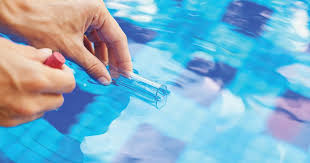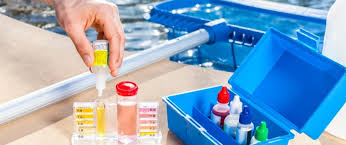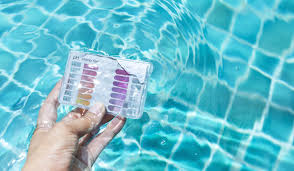Pool Water Testing
Safe, healthy water. It’s what we all want most when it comes to our pools and spas.
Regularly testing your water is an essential part of maintaining your pool’s welfare. Getting an accurate reading of your water chemistry helps you understand exactly how much of what product your pool needs. Testing your pool water prevents the possibility of under-treating or over-treating the water, which keeps your pool properly balanced and saves you money!
Let’s go over a few of the basics when it comes to properly testing your pool’s water. There are two ways to test your pool water — at home or in-store.
At-Home Pool Water Testing
Leslie’s offers several options you can use at home, including test kits and test strips. Testing at home is easy, but there are a few things you need to know before getting started. Which type of test will work best for you? Let’s take a quick look at the pros and cons of each:
Liquid Test Kits
PROS
- Most accurate type of water test. Liquid DPD reagents are the best for testing chlorine levels in your pool
- Testing available for more diverse aspects of water chemistry
- This method is used by pool professionals and health departments
CONS
- Most expensive water test
- Testing process can take longer and be more complicated than test strips
- Reagent bottles must be held vertically to ensure uniform drop size, and drops must be counted as they’re slowly added
- More prone to user-error
Test Strips
PROS
- Fastest water test
- Simple to use and read
- Least expensive to purchase
- Most popular option for pool owners wanting a quick, daily pool chemistry analysis
CONS
- Fewer options for testing capabilities
- Not as accurate or precise as a liquid test kit
- Some results take just a few seconds to develop, and some take longer; for tests with multiple results on the same strip, it’s important to understand the timing so you don’t get inaccurate results
- Hands must be completely dry when removing the strip from the container

Special Tests
Standard test kits will accurately test for the four or five principal tests most homeowners need. There are also specialty tests that can be conducted in certain circumstances:
- Biguanide water treatment systems, found on some swimming pools, require biguanide test strips to check the sanitizer levels, pool pH, alkalinity, and calcium hardness levels.
- Test for salt on saltwater pools using a salt test strip. if you use a salt-chlorine generator, you will also need to test for chlorine.
- Phosphates can be tested using a phosphate test kit. Phosphate can enter a pool from a variety of sources, such as lawn fertilizers, and they can lead to algae that feed on the phosphates.
- If pool water stains the surface of your pool, you can test for metals such as copper or iron using special test strips designed for the purpose.
- Chloramines (combined chlorine) can be tested with a DPD test kit. ShockCheck test strips can tell you when shocking is needed to remove chloramine.
- TDS (total dissolved solids) can be tested with a SafeDip test meter.

Why Testing Your Pool Water Is Important
Your pool, while it looks like a pond, is more of a chemistry lab. The chemicals in your pool can either keep it clean or make it potentially dangerous. Testing your water is the only way to know for sure what those invisible chemicals are doing in your water.
You need to test your water often. While it might seem like a hassle, it’s a good thing! The better balanced your water, the less cleaning and water changing.
When and How Often to Test Your Pool
You can test pool water yourself, but if you don’t feel super comfortable doing that, you can also take a sample in for professional testing when you open and close your pool. A second set of eyes keeps it safe and clean. On the whole, you should be testing your pool at least once a month in addition to when you open and close it for the season.
Regular testing is essential for your chlorine, alkalinity, and pH levels. It’s so significant, the CDC calls chlorine and pH your “disinfecting team.” The minimum testing schedule for pH and chlorine is weekly, starting before you open your pool.
There are other times that you should test for balanced levels though, including:
- After a rainstorm
- After large groups have used the pool
- Before beginning any form of algae treatment (pH testing is mandatory here)
- After changes in the weather
- After adding water
- Before you close your pool
- If you notice any issues with your water, like cloudiness or color changes

Pool-water chemical levels to test and balance
The four chemical levels critical to healthy water are free chlorine, calcium hardness, pH, and total alkalinity. Along with cyanuric acid (a type of water conditioner sometimes referred to as “sunblock for pool water”), these compounds work in unison, and having each at the right level helps deliver sparkling, swim-ready water.
If water analysis indicates that one or more chemical levels are too high or too low, the message is to take action. With the water readings, you will know to add products like chlorine, muriatic acid, sodium bicarbonate, or other pool treatments.
Sources of contamination in swimming pools
Potential sources of microbes in your pool may include:
- People swimming in the pool – this is the main source of microbes.
- Animals, such as dogs – some pets like to paddle in the pool on hot days.
- Dead wildlife – for example, frogs, lizards or insects may occasionally drown in your pool.
- Debris from around the property, such as leaves, grass and dust.